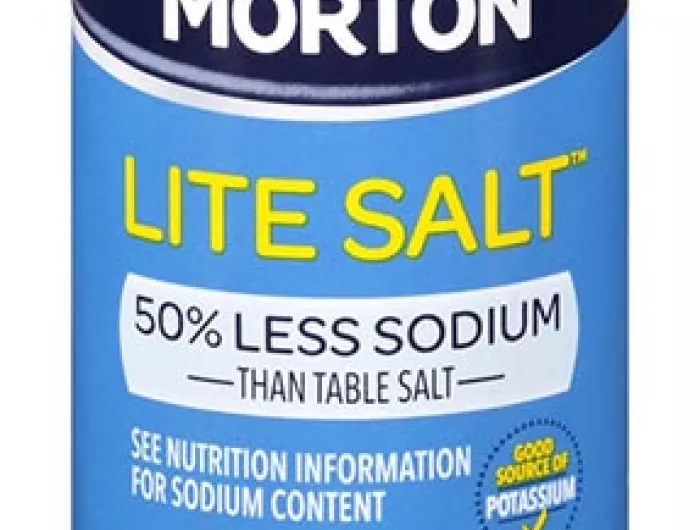Why switching to kosher or potassium salt can help you cut back on sodium

Want the same salty taste with less sodium?
Replace some ordinary table salt (sodium chloride) with potassium salt (potassium chloride).
The upside: salty taste, no sodium, and a nice dose of potassium (which helps lower high blood pressure). Sodium-free potassium salt substitutes have 600 to 800 milligrams of potassium per ¼ teaspoon. A small banana has 360 mg.
The downside: some people detect a bitter aftertaste from pure potassium salt. So try a half sodium-half potassium salt blend like Morton Lite Salt. A ¼ teaspoon has 290 mg of sodium—about half what regular table salt has—and 350 mg of potassium.
Note: Some diseases (like heart failure or kidney disease) and some drugs (like ACE inhibitors, angiotensin II receptor blockers, and potassium-sparing diuretics) make it hard to excrete potassium. If that applies to you, talk to your doctor first.
What about kosher salt?

Why do our recipes often call for kosher salt?
Kosher salt’s coarse crystals mean that each teaspoon has less sodium than ordinary, finely ground table salt. That makes it easier to avoid over-salting a dish because you have more room for error. But keep in mind that—gram for gram—kosher salt has no less sodium than ordinary table salt.
Our Healthy Cook recipes use numbers for Morton Coarse Kosher Salt, which has 480 milligrams of sodium per ¼ teaspoon. Regular table salt has 590 mg.
To slash the sodium per teaspoon further, look for Diamond Crystal, which has just 280 mg per ¼ tsp., thanks to its hollow crystals. Bonus: They dissolve quickly, making it a favorite of chefs.
Kosher salt has no iodine, but odds are, you get enough from other foods. Still worried? Take a multivitamin-mineral supplement. Planning a pregnancy? Take a multi for the iodine...and more.
Photos: Morton Salt, Inc., Cargill, Incorporated.

